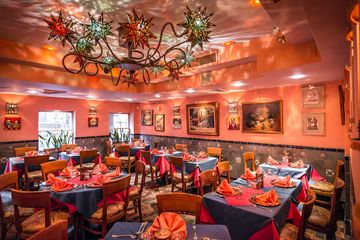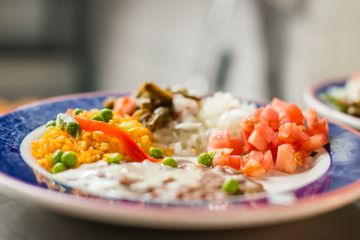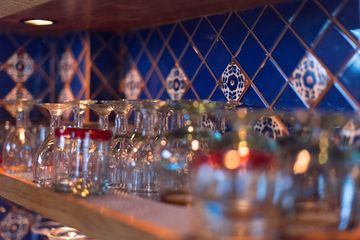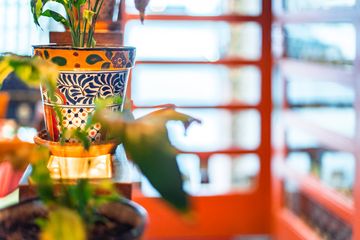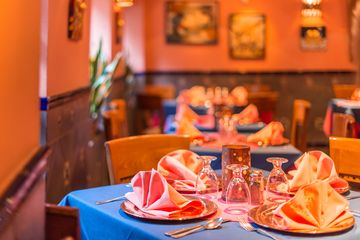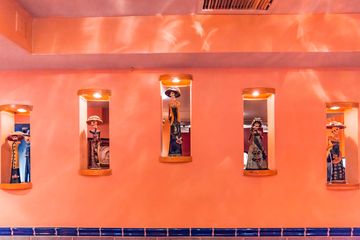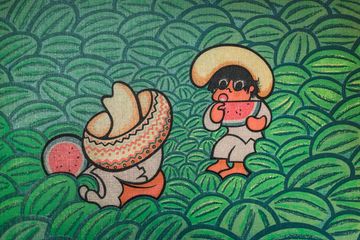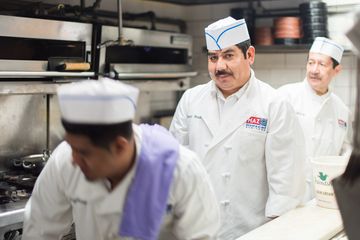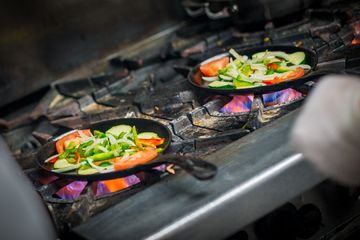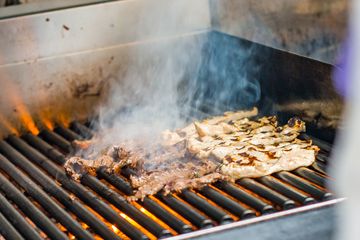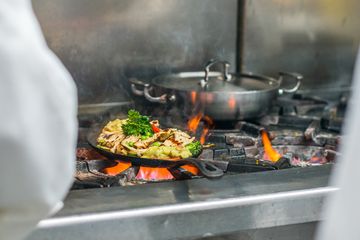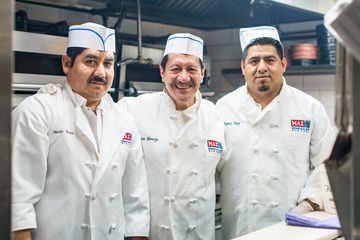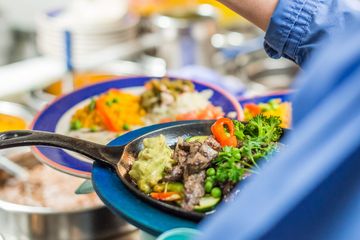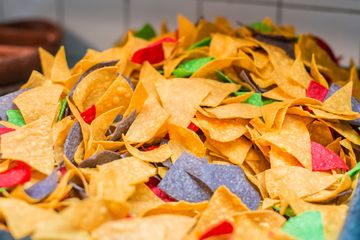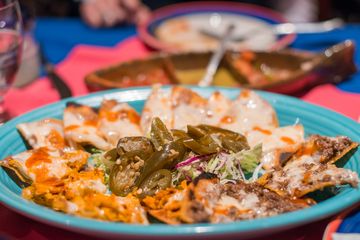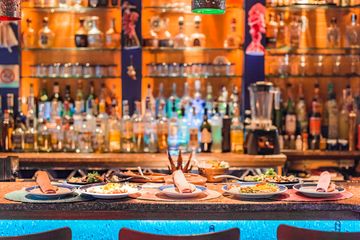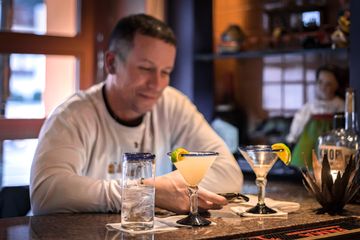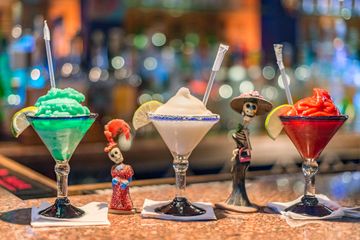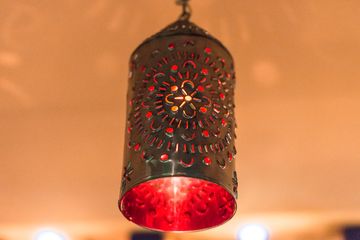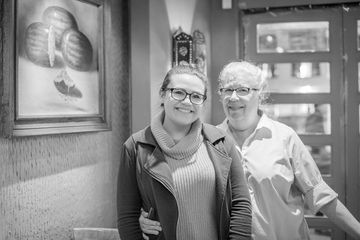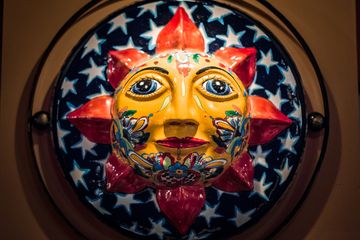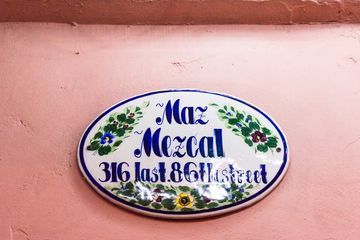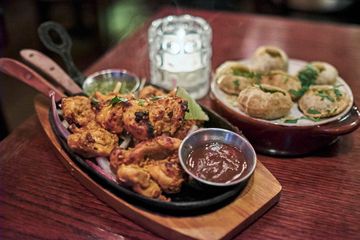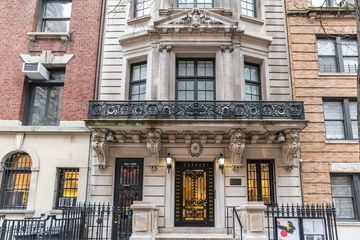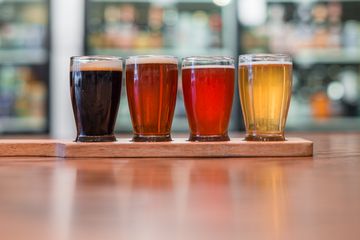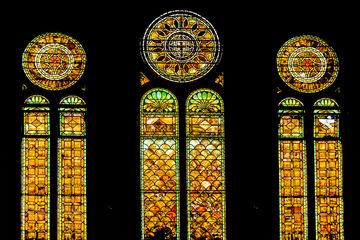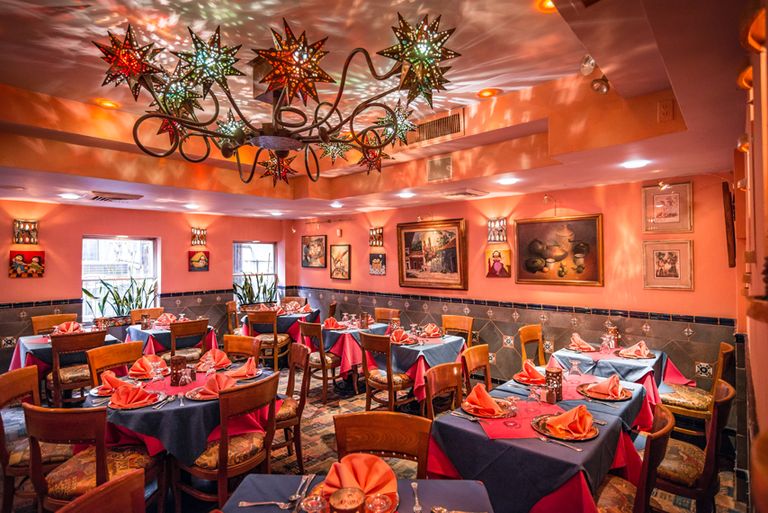
Everybody at Maz Mezcal, whether they work at the restaurant or dine there as a customer, is considered to be a member of the family. It is difficult not to break into a smile after entering the space and being greeted not only by the warm, bright colors of the decor, but also by the friendly staff, led by their matriarch Mary - or most commonly and affectionately, "Mama."
Mama's story seems to be right out of a fairytale. She is possibly the only non-Mexican member of the restaurant staff, having grown up in Indiana. She met the now-owner of Maz Mezcal, Eduardo Silva, when she was sixteen-years-old and he was eighteen. Eduardo, whose family is from Mazatlan, Sinaloa in Mexico, was stationed in Indiana with the army. One day, his car ran out of gas and along came young "Maria" to his rescue. She helped him out by purchasing the necessary gas. Eduardo left for Vietnam, but the two teenagers wrote to each other throughout his time overseas. When he returned, the couple moved to New York, where Eduardo's father already had a few restaurants on the Upper East Side, and joined the culinary world. Mary, who had never even eaten in a restaurant and had never heard Spanish spoken before meeting Eduardo, was thrown into a totally new world that she embraced from the beginning. She told me that when the couple was living with Eduardo's parents, Eduardo's mother refused to speak to her in English, even though the older woman knew how. As a consequence, in part, Mary is now fluent in Spanish.
Maz Mezcal originally opened up a few doors down from its current location in 1972. Though she has since handed over the full responsibility of cooking to the chefs, Maria prepared most of the meals for many years after they opened. Eduardo was, and has always been, the primary decorator. Mama got a bemused look on her face when she spoke about the eclectic items that Eduardo brings back with him every time he visits Mexico. The restaurant is filled with the beautiful and quirky calacas (the skeletons commonly used for Day of the Dead decorations) that Eduardo collects during his travels. And they are particularly popular when the restaurant hosts a set of Halloween parties each year - "one for kids and one for adults."
In 1987, Maz Mezcal moved to its current location. Just as Mary and Eduardo were starting to settle into their new location, and one month before their twenty-fifth wedding anniversary, their daughter Gabi came along. "She was a huge surprise," Maria said, giving her daughter a hug. It was clear even from my limited interaction with the mother and daughter that not only is Gabi a wonderfully friendly, polite, and jubilant member of the team, but she is also an enormous help. She knows the restaurant like the back of her hand, having essentially grown up in it. Gabi happily told us that she has been walking across the street to Maz Mezcal from their apartment almost every day since she was four years old and she has been taking on the duties of a hostess since she was eight. Her best friends growing up were the children of Maz Mezcal's employees, who have now similarly grown up to join their parents at the restaurant. "It takes a village," Gabi said, to which her mother gave a proud smile. This particular village includes the customers. Mama is proud of the strong following that Maz Mezcal has accrued and loves when diners say things like, "How old is Gabi now? So old!" Today, decades later, people whom Mama remembers as teenagers are now dining here with their grandchildren. The whole circle of life is contained under Maz Mezcal's roof.
Always one to appreciate a walk through the kitchen, I stopped to take a look at the lineup of ingredients that tended towards bright red, green, and purple colors. There were bowls of multi-colored chips and vats of freshly made guacamole and salsa - at three different levels of spiciness. I also had the pleasure of meeting some of the other "family" members. Jose, who has been with the restaurant since the early 1980s, was there, along with Antonio, a fifty-one year old man who started working with Mama when he was fifteen. I learned further examples of how everyone at the restaurant is part of the same network: Gabi's nanny when she was a baby was Antonio's godmother, and Juan's aunt is grandmother to Johnny, another one of Gabi's co-workers and former playmates.
While sampling some of the amazing dishes and sipping on a variety of margaritas, Joe, a regular, came and seated himself at the bar - but not before giving Mama a hug. He then turned to no one in particular and declared, "This is one of the last authentic places on the Upper East Side." We understood perfectly: Even though we were sitting in a beautifully decorated restaurant, we felt as if we were being treated to a home-cooked meal surrounded by family. Gabi nodded when we said this and added, "Everything is made with so much love and attention because we want people to be at home here. It's great that after a long day, this is where people want to come."
